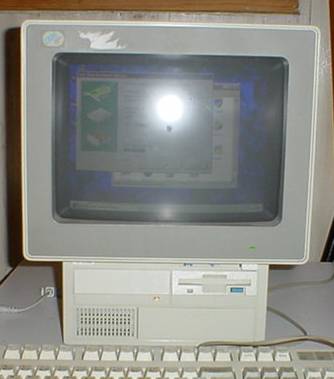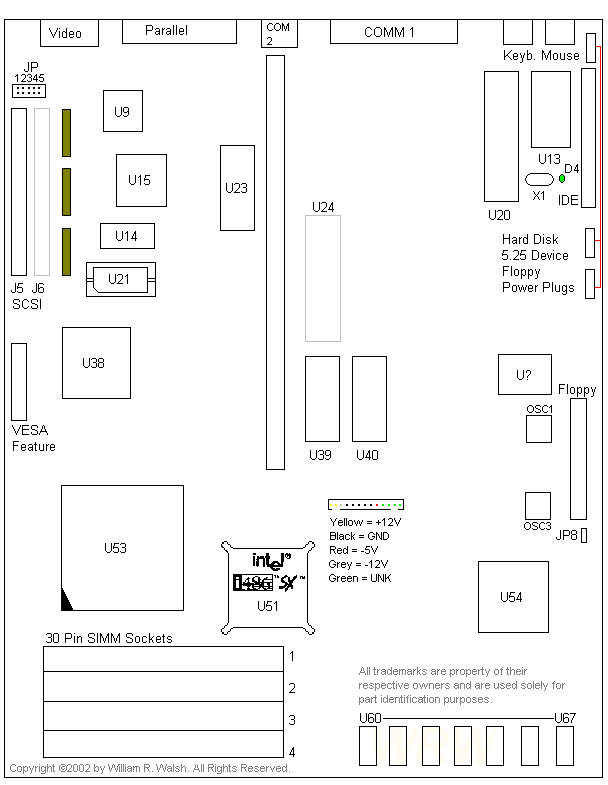EduQuest Model 40 9604-04X

XT-IDE Card
Power Supply
Planar Outline
Option Cards
This was "rescued" from a computer and electronics recycling drive in the early 2000s.
It'd be pretentious of me to say that these pages have been anything like maintained since they were written in the early 2000s. They've basically slumbered since I created them. Very few people have come forward with any more information about these machines. The EduQuest division of IBM is long since gone, and even IBM itself is now out of the personal computer business. Whether timely or not, I cannot guarantee that there will be any further updates to these pages. Still, if you have information about these systems, their supporting software or even if you'd just like to share your story of having used/seen/bought one or whatever, I'd certainly like to hear from you. I no longer own any working EduQuest systems at this point in time, and don't expect that I'll ever find any more in future. - WW, September 2016
CPU: Soldered Intel 486SX-25 CPU (an "OverDrive" ready upgrade socket is available)
RAM: 20MB Installed RAM (4MB soldered to the motherboard, 4x4MB added via SIMMs)
Removable Storage: 1.44MB Floppy Disk Drive
Fixed Storage: 1.2GB Hard Disk
Operating System: Windows 95 OSR 2
MS-DOS 5.0 is present in an external ROM. A setup utility is built in, there is no reference or starter disk I know of. As with the other models, the only way I've found to get into the BIOS setup utility is to cause an error during the power on self test (POST). Holding down a key on the keyboard is quite effective for this. All EduQuest models that I've worked with produce a distinctly unhappy "beep boop" sound when a self test failure occurs, so you'll know when you've managed to trigger an error.
I have found that use of a disk manager (those based on Ontrack software) requires a "cooked" diskette as the EduQuest Models 30 and 40 (and possibly all other EduQuest models) cannot boot the DR-DOS used with Ontrack's solution. Why I don't know. Replacing the DR-DOS system with MS (or possibly even PC) DOS might work. Whether these machines can boot FreeDOS or not is unknown.
528MB disks are the maximum supported by the onboard IDE. Higher capacity is possible if you use a disk manager program. However, there is also a hardware solution to using larger disks or CompactFlash cards in the form of the XT-IDE board.
XT-IDE and the EduQuest
It is reported that when used normally, an XT-IDE adapter is not compatible with the EduQuest as its option ROM is not allowed to load. Chris Esch discovered that there is a solution in the form of removing the expansion ROM that contains the EduQuest's DOS-in-ROM functionality. From that point, the XT-IDE adapter's ROM can be placed into the socket from which the original DOS-in-ROM chip was removed. Be careful that you insert the chip correctly. Otherwise you may burn it or your EduQuest system out.
Power Supply
I noticed at times of changing load, that the power supply in all of my EduQuest systems would sometimes behave in an unstable manner. The screen image would shrink or "vibrate" noticeably if something like an internal CD-ROM drive were to spin up. None of them ever failed as a result of this, and I never got so far as to diagnose it. My best guess would be faulty or dried-out electrolytic capacitors that had changed in value, particularly any that were being used as power filters.
Planar

Jumpers/Connectors/Plugs:
JP1 - Open for video disable, close for video enable
JP2-5 - No Idea, 2 and 4 closed on my planar
JP8 - Reset Switch
J5 - SCSI Connector
IDE - IDE Connector
FLOPPY - Floppy Connector
J6 - Pads below J5, possible external SCSI port option?
VESA FEATURE - VESA Feature connector
SIMM 1-4 - 30 Pin SIMM Sockets
Components:
X1 - 12.000MHz XTAL
OSC1 - 24.000MHz
OSC3 - 50.000MHz--halved for 25MHz CPU clock
D4 - Power LED
U9 - MUSIC MU9C4870-80DC Video DAC
U13 - Benchmarq bq3287MT
U14 - Samsung KM416C157AJ7 70NS VRAM (512K)
U15 - VLSI/Future Domain TMC-950 SCSI
U20 - Intel 8042 KBC
U21 - Upgrade VRAM Socket (another 512, total of 1MB)
U23 - Video and System ROM BIOS
U24 - Empty socket marked as MASK ROM on board
U38 - ATI Mach32 Video Chip
U39 - ROM DOS 01 - MS-DOS V5.00
U40 - ROM DISK 01b (contains device drivers used by ROM DOS)
U51 - Soldered Intel 80486SX-25 CPU
U53 - 80487 Math-Co or Overdrive "ODP" CPU Socket (also can be used with normal 486 CPUs)
U54 - VLSI VL82C486-FC2
U60-U67 Samsung KM44C1000BJ-7 (4MB onboard RAM)
20MB RAM is the maximum supported amount you can install. 4x4MB in the SIMM sockets and 4MB on the system board.
Go Back> (to the EduQuest index page)
Copyright 2002-2016 William R. Walsh. Some rights reserved.